The first layer 3D printing is the foundation of every 3D print. It is crucial for stability, adhesion, and achieving good results. A robust first layer 3D printing prevents issues like warping or shifting, which can disrupt your project. Neglecting the first layer 3D printing can lead to failed prints and wasted materials. Successful printing starts with prioritizing this essential step in the 3D printing process.
Key Takeaways
- The first layer is very important for a strong print. A good first layer stops prints from moving or bending.
- Setting the bed level and Z-offset correctly is key. These settings make sure the nozzle is at the right height.
- Clean the print bed before starting to help things stick. Use rubbing alcohol to get rid of dust and grease for better results.
- Set the bed to the right heat for your material. For example, use 80ºC-100ºC for materials like ABS and PETG.
- Sovol 3D printers have tools like auto-leveling and heated beds. These features help beginners and experts make great first layers.
The Importance of the First Layer in 3D Printing
Stability and Structural Integrity
The first layer is the base of your 3D print. A strong base helps the rest of the print stay steady. If the first layer is weak, the whole print might fail. For example, if the first layer moves, the next layers won’t line up. This can cause the print to break or look wrong.
To make the base strong, level the bed and keep it clean. Sovol 3D printers, like the SV06 and SV07, have tools to help with bed leveling. These features make it easier to create a solid first layer and avoid problems like warping.
Tip: Check your printer’s Z-offset settings. A good Z-offset helps the nozzle place material at the right height for a stable first layer.
Adhesion to the Print Bed
Adhesion keeps the first layer stuck to the print bed. If it doesn’t stick well, the print might come loose and fail. A strong bond stops the print from warping, especially with materials like PETG or ABS.
Things like bed temperature, cleaning, and filament type affect adhesion. For example, setting the bed to 80ºC-100ºC helps some materials stick better. Cleaning the bed with isopropyl alcohol removes dirt and oil. You can also use glue sticks or PEI sheets to improve adhesion.
Sovol 3D printers are made to help with adhesion. Their heated beds and good surfaces keep the first layer in place, even with tricky materials.
Impact on Print Quality and Precision
The first layer affects how good your print looks and works. A smooth first layer makes the rest of the print line up well. But a rough first layer can cause gaps or bumps in the final print.
Changing settings like speed and temperature can improve print quality. For example:
|
Metric |
How It Helps |
|---|---|
|
Print Speed |
Slow speeds (30-50 mm/s) make layers stick better and look nicer. Fast speeds save time. |
|
Platform Temperature |
Higher temperatures (80ºC-100ºC) help with sticking and stop warping, especially for PETG. |
|
Parameter Optimization |
Adjusting settings makes prints stronger and smoother. |
Sovol 3D printers make these changes easy. Their simple controls and tools help you get the best results. Whether you’re new or experienced, Sovol printers help you make great first layers.
Note: Spending time on the first layer saves materials and avoids failed prints. It also makes your prints look better.
Focusing on the first layer is key to good 3D printing. Sovol 3D printers, with their helpful features, make this step easier. Try their printers for better, smoother prints.
Common Problems with the First Layer in 3D Printing
Weak Stickiness to the Bed
Weak stickiness is a common first-layer problem. If the material doesn’t stick well, the print can fail. The print might move or come off during printing. A dirty bed, wrong temperature, or bad leveling often causes this.
To fix this, clean the bed with isopropyl alcohol. This removes dust and oils. Set the bed temperature based on your filament type. For example, ABS and PETG need higher heat to stick. You can also use glue sticks or special sheets for better stickiness.
Tip: Always level the bed before printing. A leveled bed helps the nozzle spread material evenly.
Uneven or Lifted First Layer
An uneven or lifted first layer can ruin your print. Lifting happens when the edges of the layer rise off the bed. This can occur due to fast cooling or poor leveling.
To stop lifting, heat the bed to the right temperature for your filament. PLA may not need much heat, but ABS and PETG do. Leveling the bed is also very important. Use paper or a leveling tool to check the nozzle’s distance from the bed.
Note: If lifting happens, try raising the bed temperature or adding a brim to hold the edges down.
Bumpy or Uneven Surface
A bumpy first layer can lower print quality. You might see gaps, bumps, or uneven lines. This usually happens because of wrong nozzle height, uneven material flow, or a dirty bed.
To get a smooth layer, adjust the Z-offset. The nozzle should press the filament gently onto the bed. Check extrusion settings to ensure smooth material flow. Cleaning the bed also helps the filament stick evenly, reducing bumps.
Pro Tip: Print the first layer slowly. Slow printing helps the material settle and creates a smoother surface.
Causes: Incorrect Bed Leveling, Z-Offset, or Dirty Print Bed
Many things can cause first-layer problems. These include bad bed leveling, wrong Z-offset settings, or a dirty print bed. These problems often lead to poor sticking, uneven layers, or rough surfaces.
-
Incorrect Bed Leveling
Bed leveling makes sure the print bed is flat and even. If the bed isn’t level, the nozzle might be too close or too far. When it’s too close, the filament gets squished or uneven. If it’s too far, the filament won’t stick at all. Check and fix the leveling often to avoid these problems. Some printers, like Sovol 3D models, have auto-leveling to make this easier. -
Wrong Z-Offset Settings
The Z-offset controls how high the nozzle is above the bed. If it’s set wrong, the filament won’t stick well. For example, if the nozzle is too high, the filament won’t stay on the bed. If it’s too low, the nozzle might scrape the bed or block the filament. Set the Z-offset correctly to get a smooth and strong first layer. -
Dirty Print Bed
A dirty bed stops the filament from sticking. Dust, oil, or leftover material can block the filament. Clean the bed with isopropyl alcohol to remove dirt. This helps the filament stick better and prevents warping or peeling during printing.
Tip: Check the nozzle temperature before printing. The right heat helps the filament flow and stick well.
Fixing these problems will improve your first layer and avoid printing issues.
Tips to Improve First Layer Adhesion and Consistency
Leveling the Bed Correctly
Leveling the bed is very important for a good first layer. If the bed is uneven, the nozzle's height will change. This can cause weak sticking, messy layers, or failed prints. A leveled bed keeps the nozzle at the right height. This helps the filament flow evenly and stick better.
To level your bed:
- Use paper or a leveling tool to check the nozzle's height. The paper should slide under the nozzle with slight resistance.
- Turn the bed screws to make the surface flat and even.
- Sovol printers like SV06 and SV07 have auto-leveling. This feature makes leveling easy and accurate.
Tip: Check the bed leveling often, especially after moving the printer. Small changes can affect the first layer.
Setting the Z-Offset Right
The Z-offset controls how high the nozzle is above the bed. Getting this height right is key for a smooth first layer. If the nozzle is too high, the filament won’t stick. If it’s too low, the nozzle might scrape the bed or block the filament.
To set the Z-offset:
- Print a small test shape, like a square or pattern.
- Watch the filament during the first layer. If it doesn’t stick, lower the Z-offset. If it looks squished, raise the Z-offset.
- Adjust until the filament lays down smoothly and sticks well.
Sovol printers make this easier with live Z-adjustment and mesh leveling. These tools let you fix uneven spots and improve the first layer.
|
Adjustment Tip |
Result |
|---|---|
|
Lowering Z-offset slightly |
Helps the filament stick better to the print bed. |
|
Raising Z-offset if filament looks squished |
Stops the nozzle from scraping and ensures smooth flow. |
|
Using mesh bed leveling |
Fixes uneven spots, making the first layer smoother and more consistent. |
Pro Tip: Test your Z-offset with a small print. A strong and smooth first layer means the setting is correct.
Cleaning the Print Bed
A clean bed is needed for good sticking. Dust, oil, or leftover filament can stop the filament from sticking. This can make the first layer lift or warp. Cleaning the bed before printing gives a smooth surface for the filament.
To clean your bed:
- Wipe it with isopropyl alcohol to remove dust and oil. Use a lint-free cloth for best results.
- For tough spots, scrape gently with a plastic tool or use warm soapy water (if safe for the bed).
- If using glue sticks or PEI sheets, spread them evenly. These help with tricky materials like ABS or PETG.
Sovol printers have strong, easy-to-clean beds. Their surfaces keep good adhesion even after many prints.
Note: Let the bed cool before cleaning. Cleaning a hot bed can damage it or leave marks.
By following these steps, you’ll get better first layers. A clean bed, proper leveling, and correct Z-offset make prints stronger and smoother.
Encouragement: Sovol printers like SV06 and SV07 make these steps simple. Their features help beginners and experts get great first layers every time.
Using Adhesion Aids (e.g., glue stick, PEI sheets)
Adhesion aids help your filament stick to the print bed. They reduce problems like warping or prints coming loose. If your prints lift off the bed, try using these tools.
Here are some common adhesion aids and how they work:
- Glue Stick: This is cheap and easy to use. Spread it evenly on the bed before printing. It works well with materials like PLA and ABS.
- PEI Sheets: These sheets are strong and reusable. They work great for high-heat materials like PETG and ABS. Clean them with isopropyl alcohol after use.
- Painter’s Tape: This tape is affordable and good for PLA. It gives the bed a rough surface for better grip. Replace it after a few prints to keep it effective.
- Hairspray: A light spray can improve sticking for some materials. Spray it evenly, but don’t use too much. Too much can cause buildup over time.
Pick an adhesion aid based on your filament and bed type. For example, PEI sheets are best for heated beds, while painter’s tape works on non-heated ones.
Tip: Always clean the bed before adding adhesion aids. A clean bed helps them work better and avoids residue buildup.
Choosing High-Quality Filaments and Materials
Good filament is key to a strong first layer. Bad filament can cause uneven layers, poor sticking, or clogs. Using high-quality materials gives smoother prints and fewer problems.
Here’s what to check when buying filaments:
- Consistency in Diameter: Good filaments have even thickness. Uneven ones can clog or make rough layers.
- Material Purity: Pure filaments without fillers stick better and make stronger prints.
- Compatibility with Your Printer: Make sure the filament matches your printer’s needs. Some need specific heat or bed types.
- Reputation of the Brand: Trusted brands usually have better quality. Check reviews from other users.
Popular filaments include PLA, ABS, and PETG. PLA is easy to use and great for beginners. ABS is strong but needs more heat. PETG is tough and flexible, making it very useful.
Pro Tip: Keep filaments in a dry, cool place. Moisture can ruin them and lower print quality.
Using good filaments and the right adhesion aids improves your first layer. These small changes can make your 3D prints much better.
Recommended Setup Tips for First Layer 3D Printing
Setting the Right Bed Temperature
The print bed temperature is important for a good first layer. Different materials need different heat levels to stick well. For example, PLA works best at 60°C. ABS and PETG need higher heat, around 80°C to 100°C. The right temperature helps the filament stick and stops warping.
Check the filament package for the recommended temperature. If edges lift or sticking is poor, adjust the heat slightly. Sovol 3D printers, like the SV06 and SV07, have heated beds. These beds keep the temperature steady for a perfect first layer.
Tip: Use the correct bed and nozzle temperatures together. This improves sticking and avoids first-layer problems.
Calibrating Your Printer for Consistency
Calibration helps your printer work better and make good prints. Start by leveling the print bed. Even tiny changes, like 20 microns, can improve sticking. Use paper to check the nozzle height. The paper should slide under with slight resistance.
Next, set the Z-offset. This controls how close the nozzle is to the bed. A good Z-offset stops gaps or squished spots in the first layer. Print a test pattern to check. The first layer should look smooth and even.
Sovol 3D printers make calibration easy. They have auto-leveling and live Z-adjustment. These tools help you get a great first layer every time.
Using Sovol 3D Printers for Enhanced First-Layer Performance
Sovol 3D printers are built to make first layers better. Models like the SV06 and SV07 have features like auto bed leveling and heated beds. They also allow precise Z-offset adjustments. These features fix problems like warping or poor sticking.
The SV06 and SV07 work with many materials, like PLA and PETG. They are easy to use and built well. Both beginners and experts can rely on them for great results.
Encouragement: Sovol 3D printers are a smart choice for better first layers. Try them to improve your 3D printing projects.
The first layer is the base of every 3D print. It affects how stable, sticky, and good your prints are. Fixing common first-layer problems helps you get better prints. It also reduces wasted materials from failed prints. Sovol 3D printers make this easier with auto-leveling and heated beds. These features are great for beginners and experts alike. Focus on setting up the first layer well to improve print quality. This will help you succeed more often in your 3D printing projects.
FAQ
What is the first layer in 3D printing, and why is it important?
The first layer in 3D printing is the base of your print. It ensures stability and adhesion to the print bed. A strong first layer prevents issues like warping or detachment, which can ruin the entire print.
How can you fix poor adhesion on the first layer?
Clean the print bed with isopropyl alcohol to remove dust and oils. Adjust the bed temperature and Z-offset for better filament flow. Use adhesion aids like glue sticks or PEI sheets to improve sticking.
Why does the first layer sometimes look uneven or bumpy?
Uneven or bumpy first layers often result from incorrect bed leveling or Z-offset settings. Ensure the nozzle is at the right height and the bed is flat. Printing the first layer at a slower speed can also help.
What tools can help with first layer 3D printing?
Auto bed leveling, live Z-adjustment, and heated beds are useful tools. Sovol 3D printers, like the SV06 and SV07, include these features, making it easier to achieve a perfect first layer.
How do you choose the right filament for a strong first layer?
Select high-quality filaments with consistent diameter and material purity. Match the filament type to your printer’s capabilities. PLA is beginner-friendly, while PETG and ABS require more heat but offer better durability.

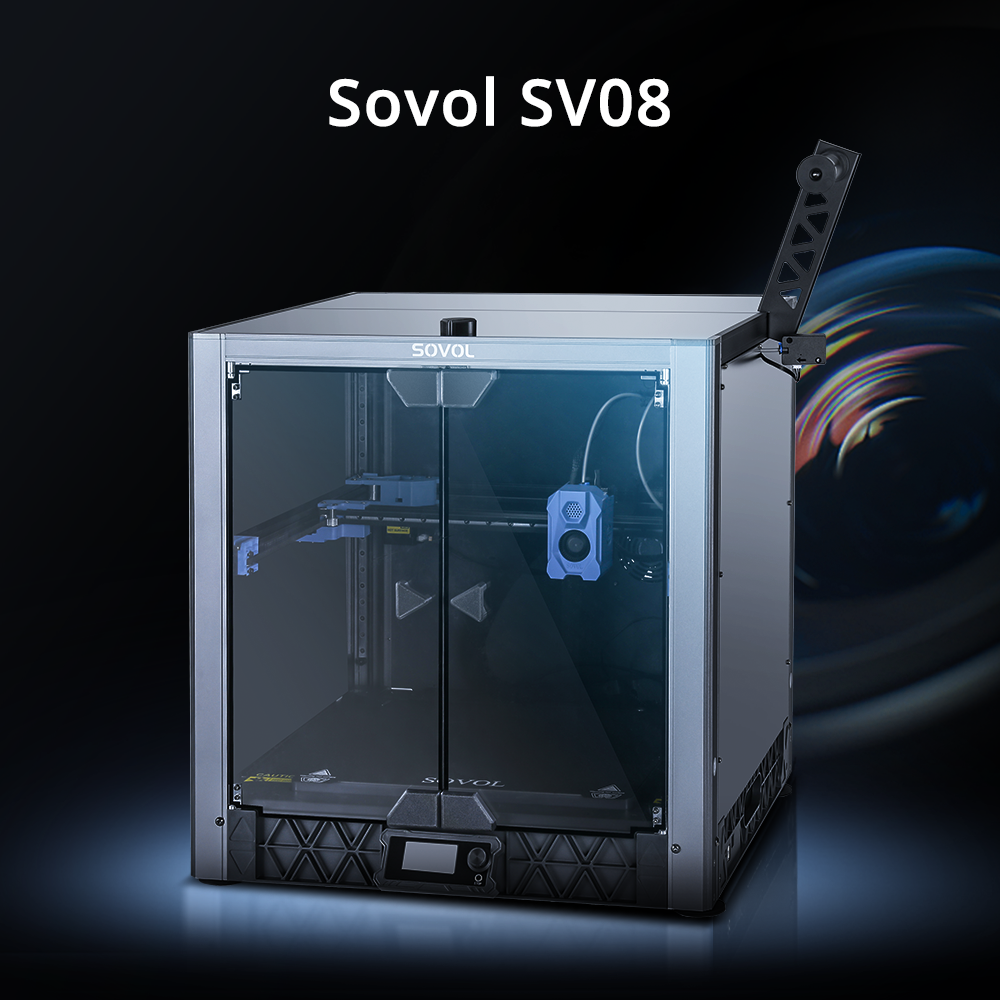
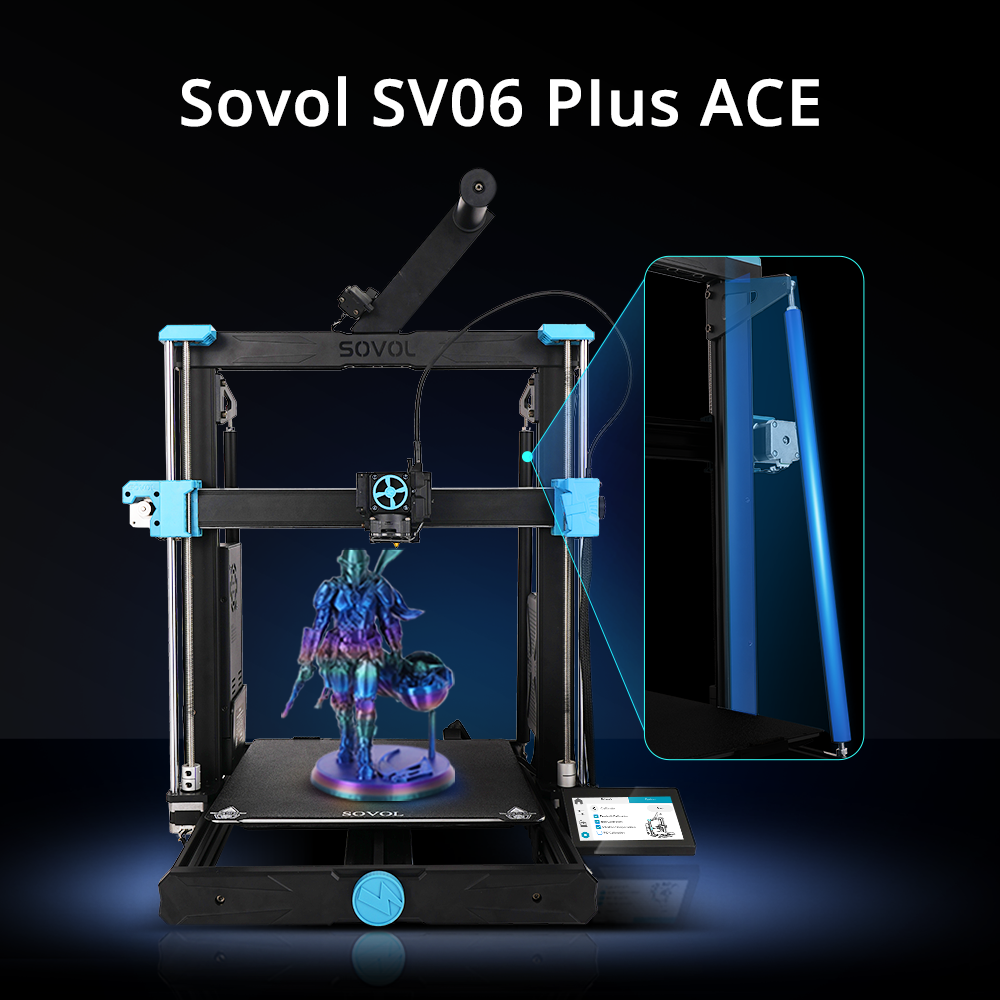
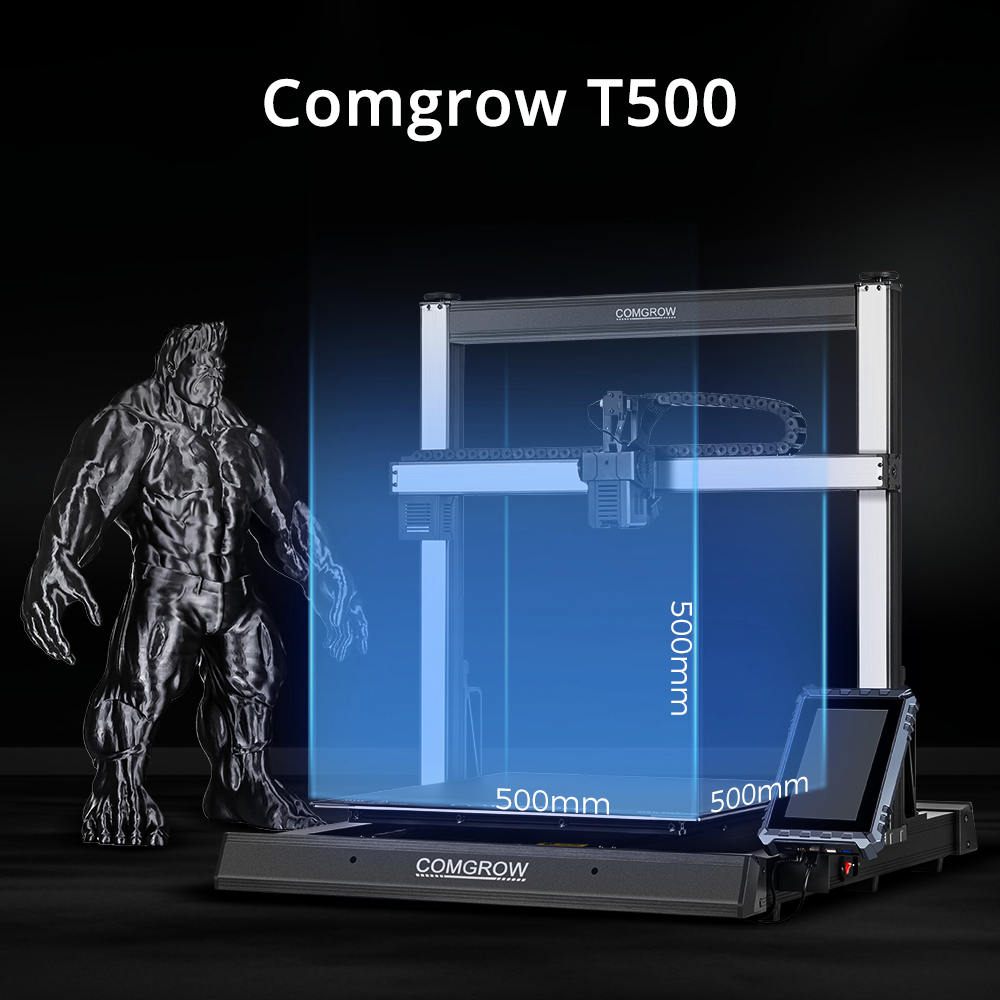
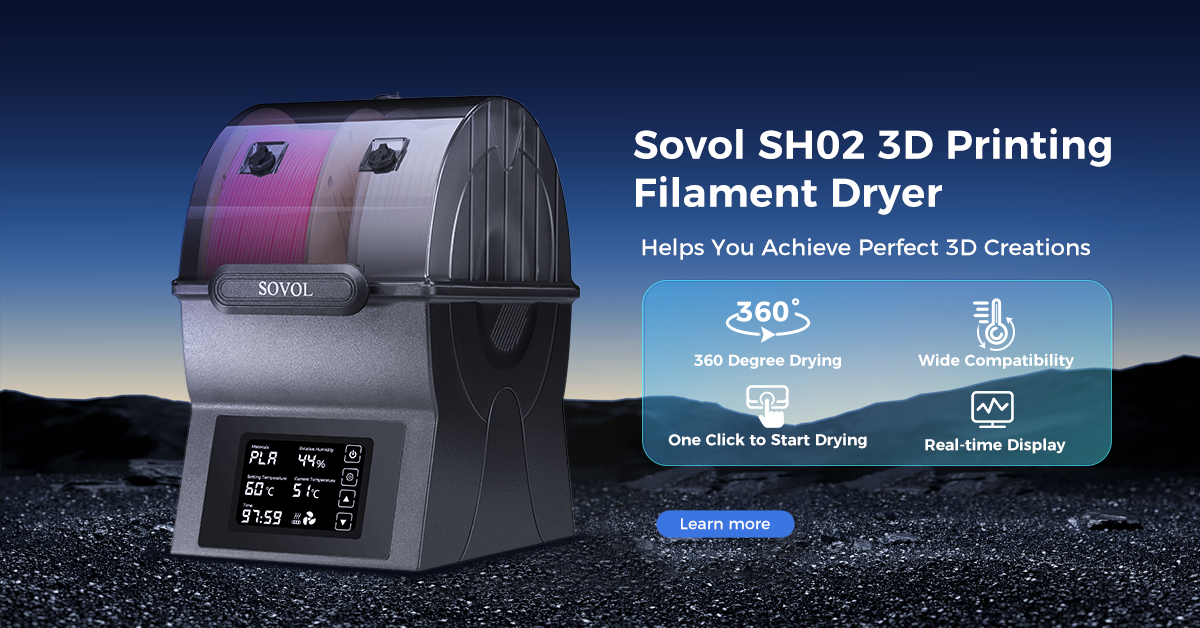
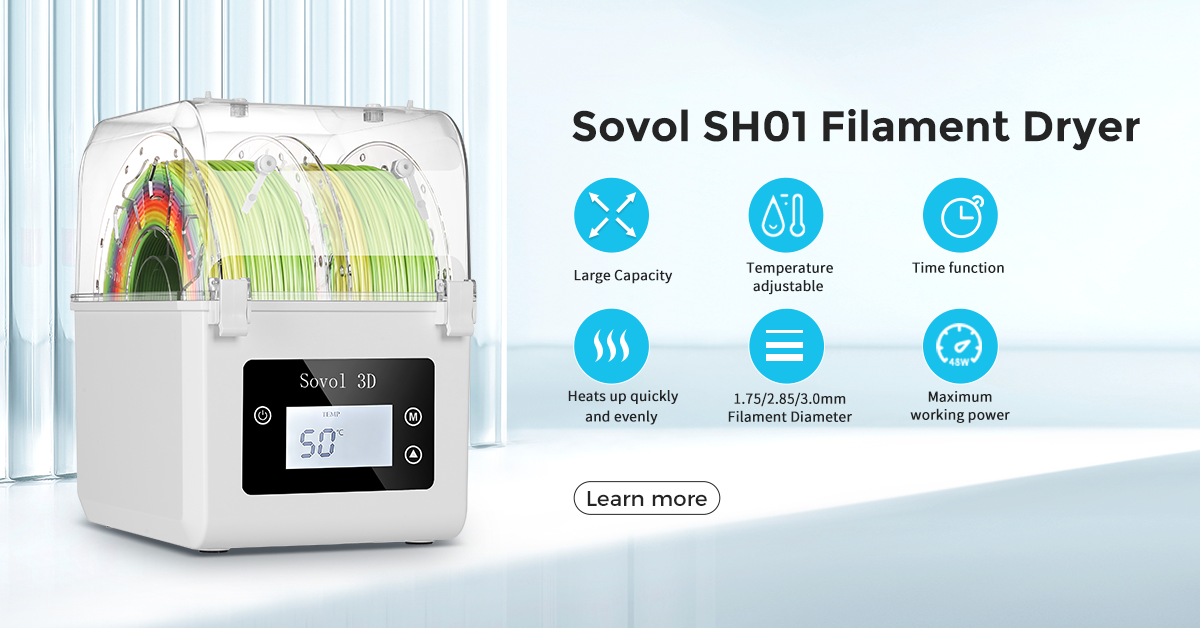
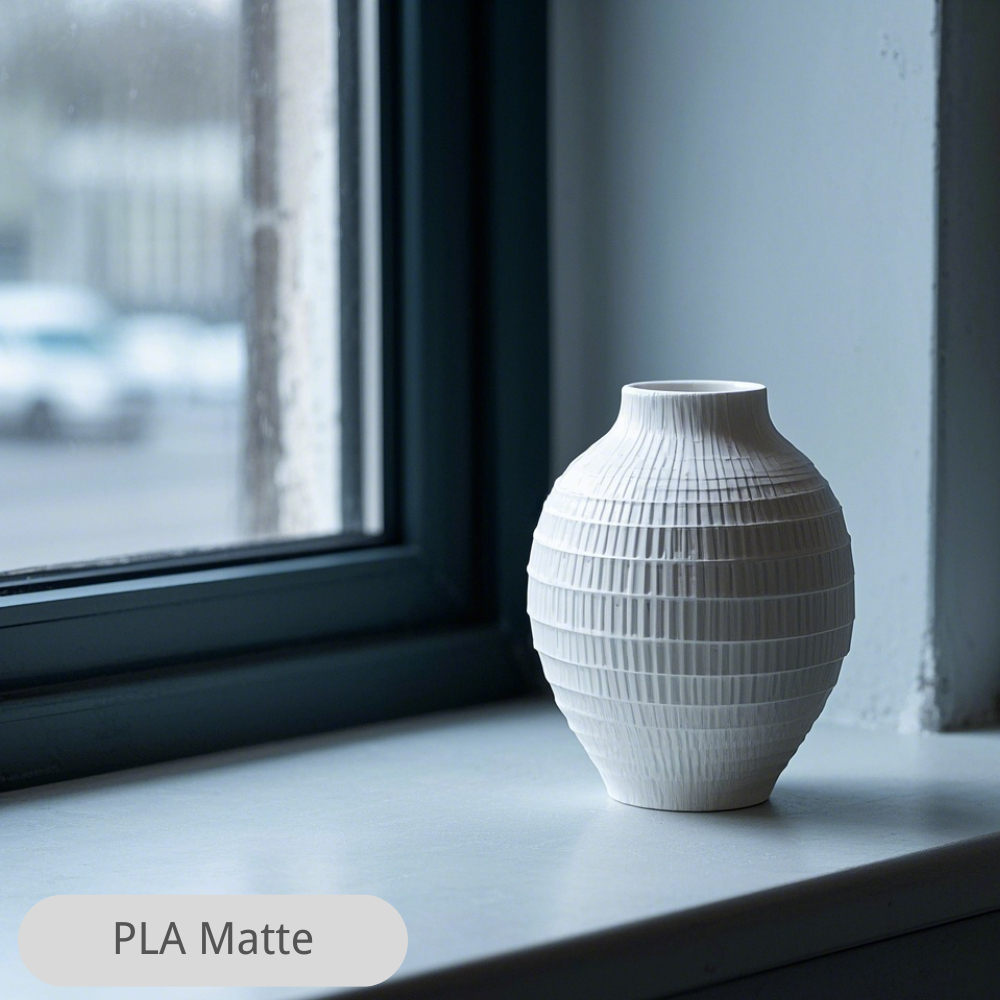

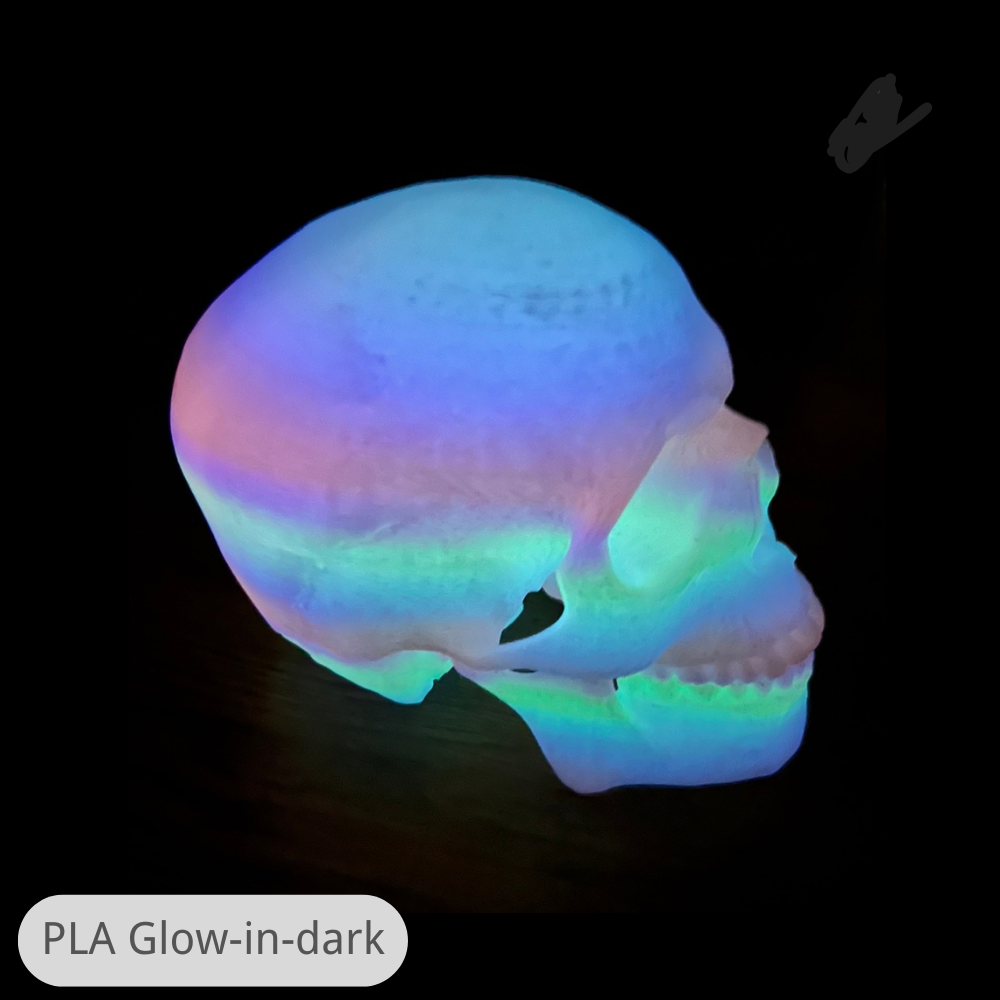
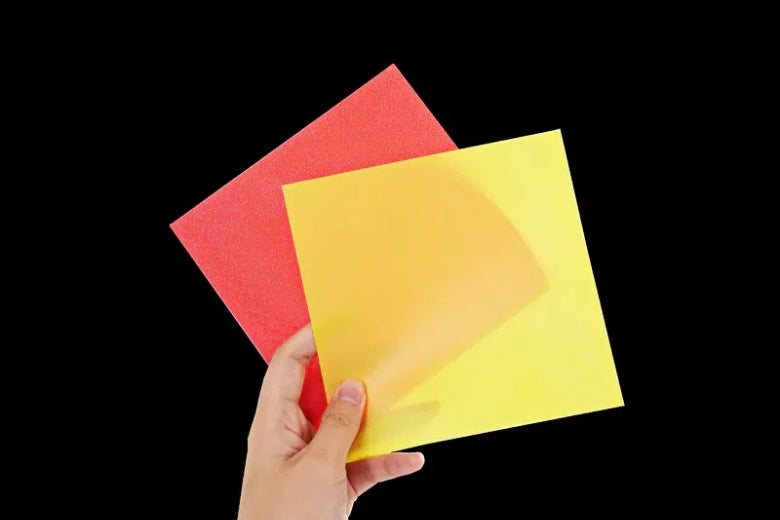
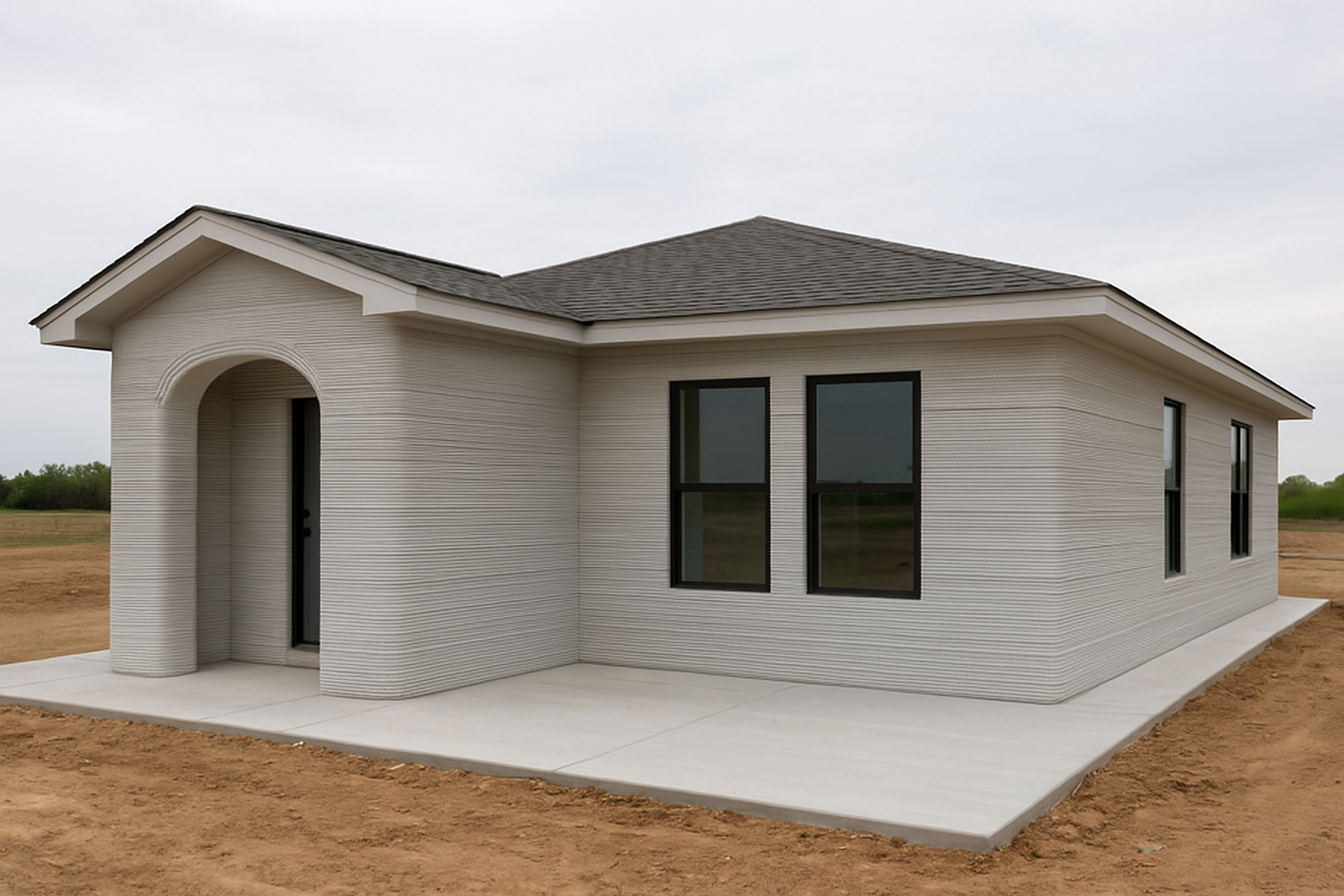
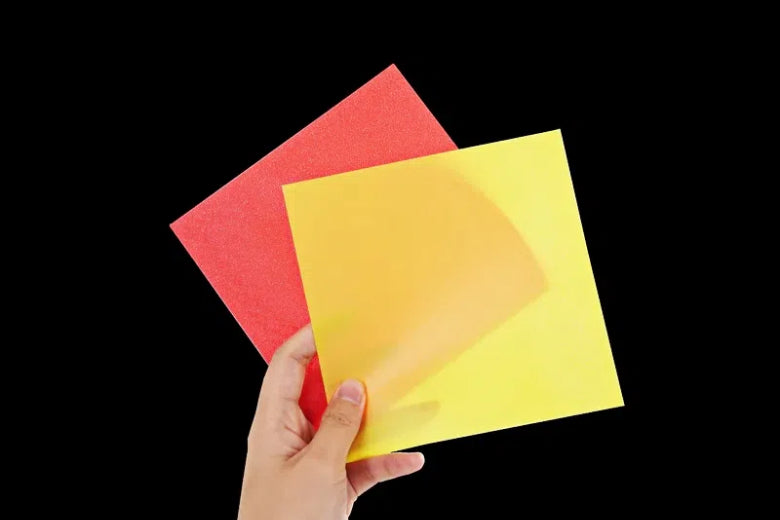


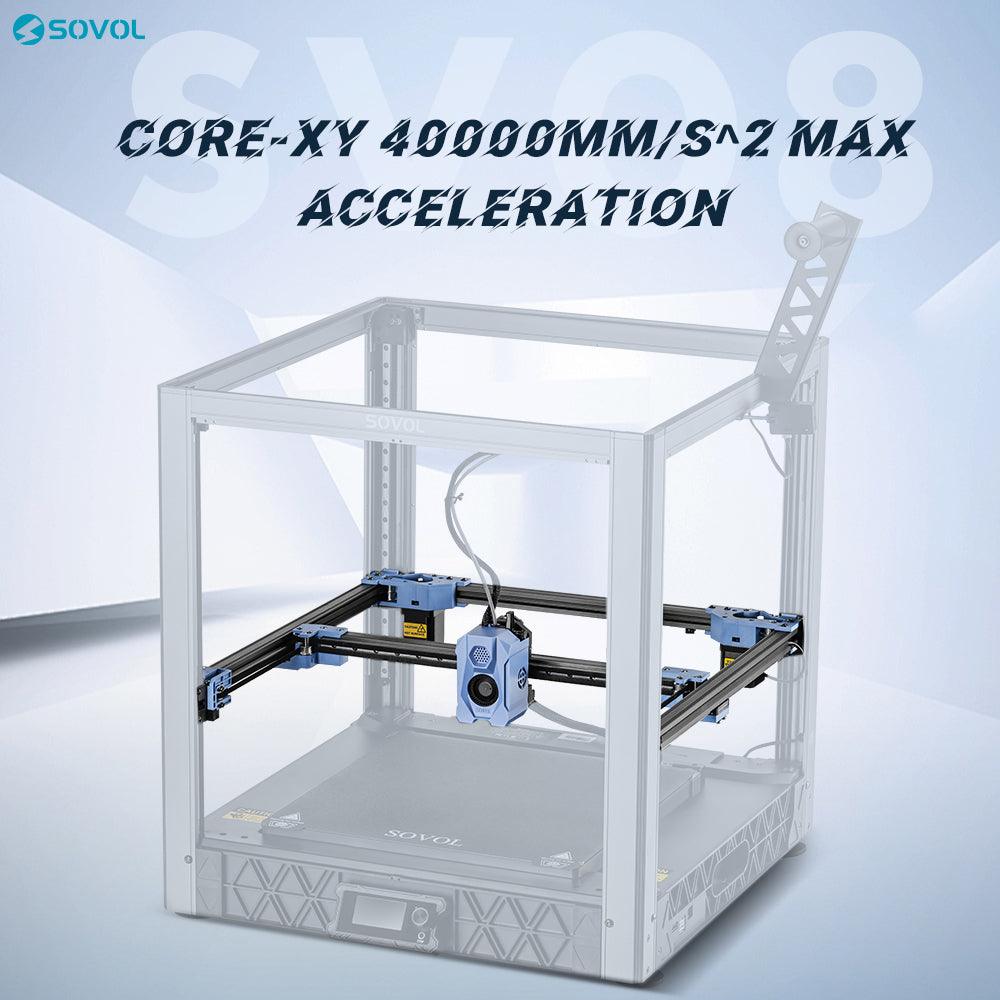
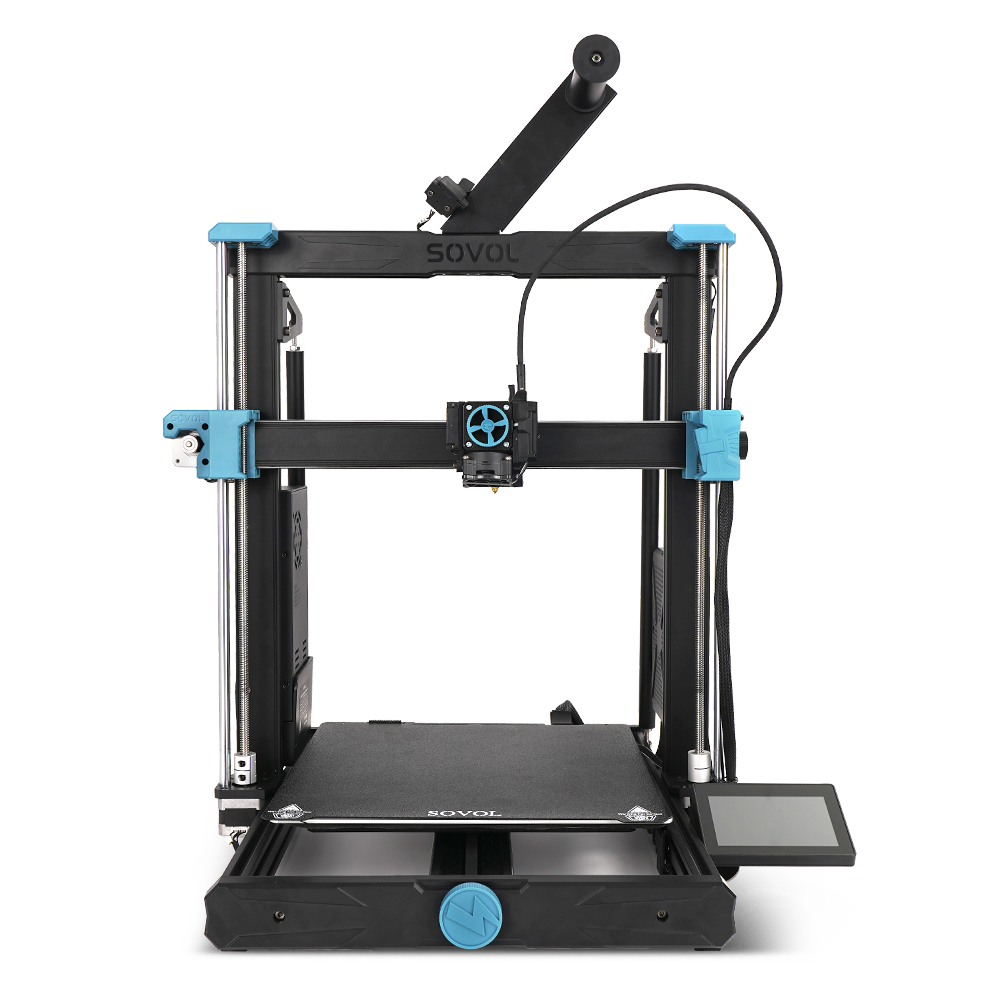
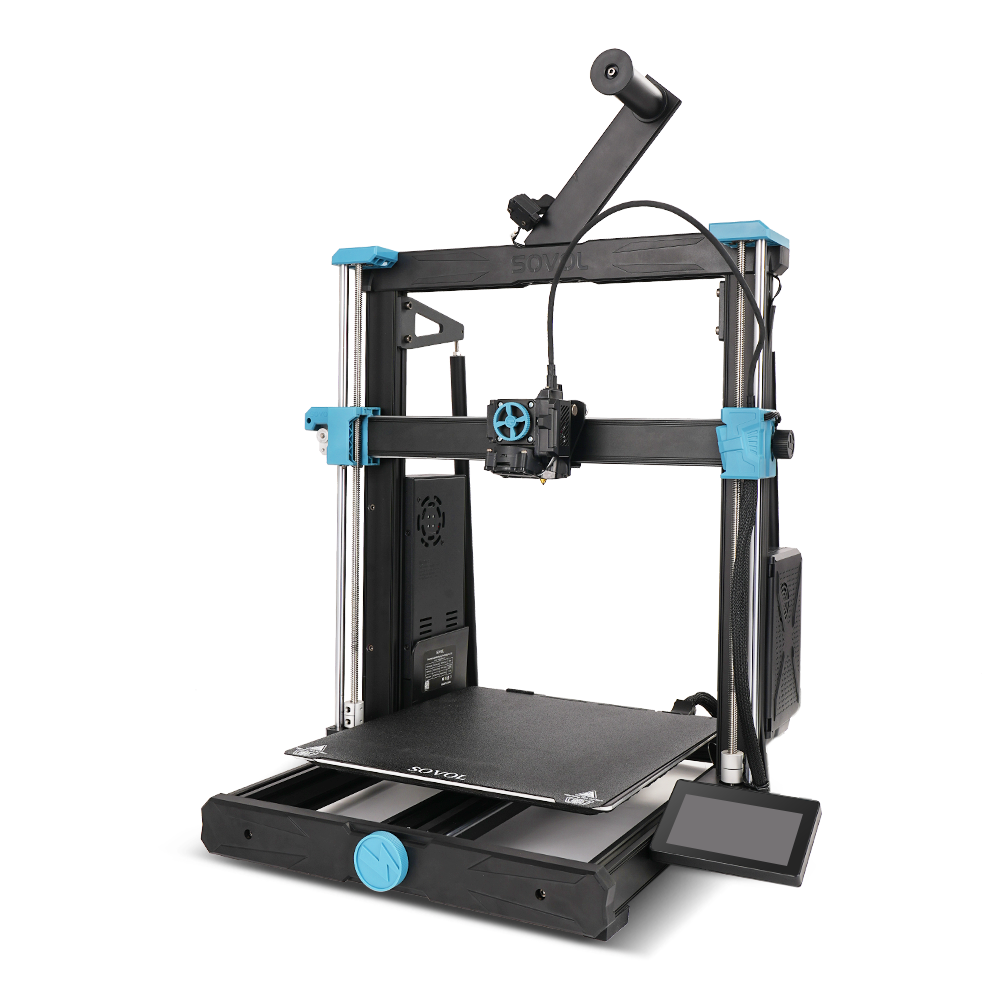


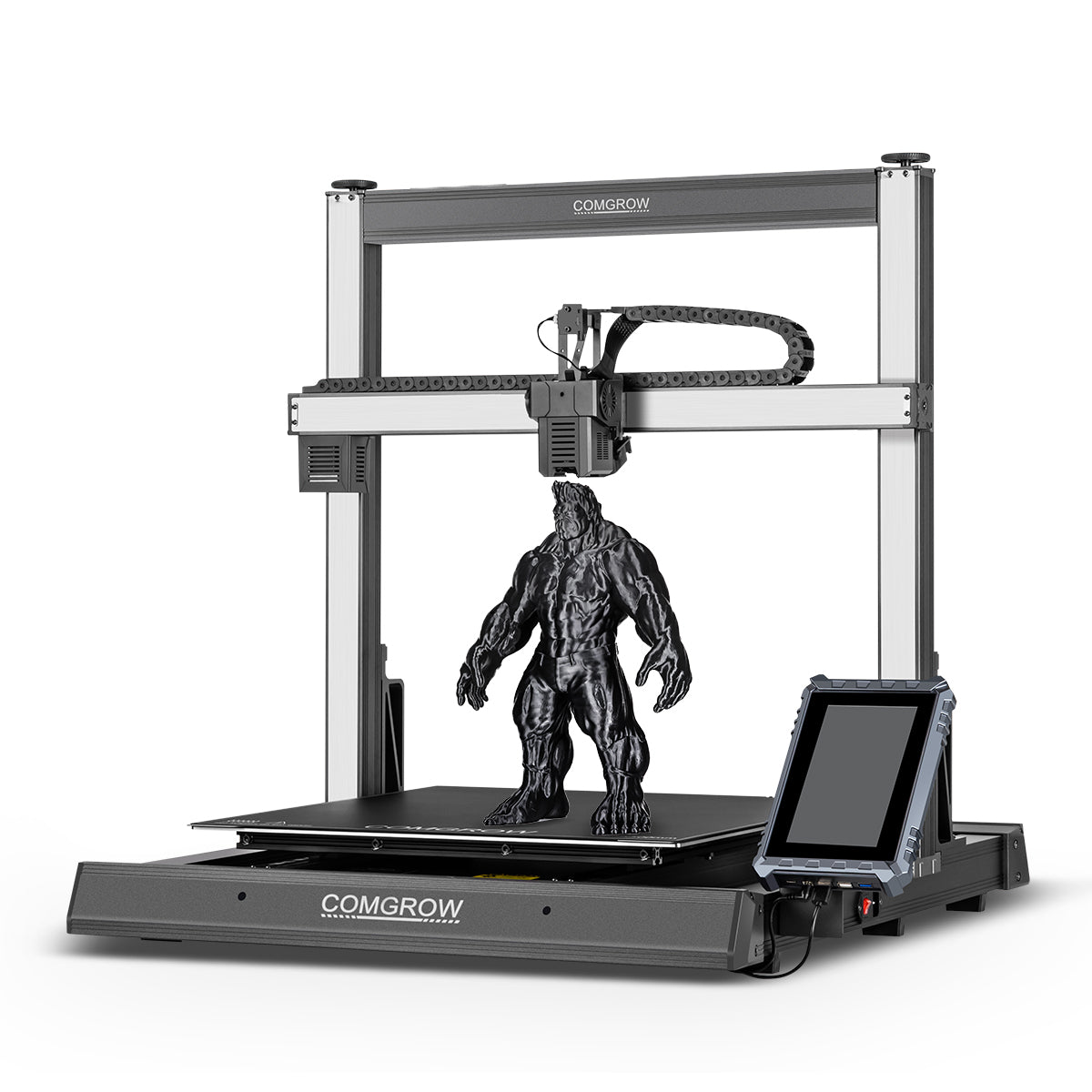
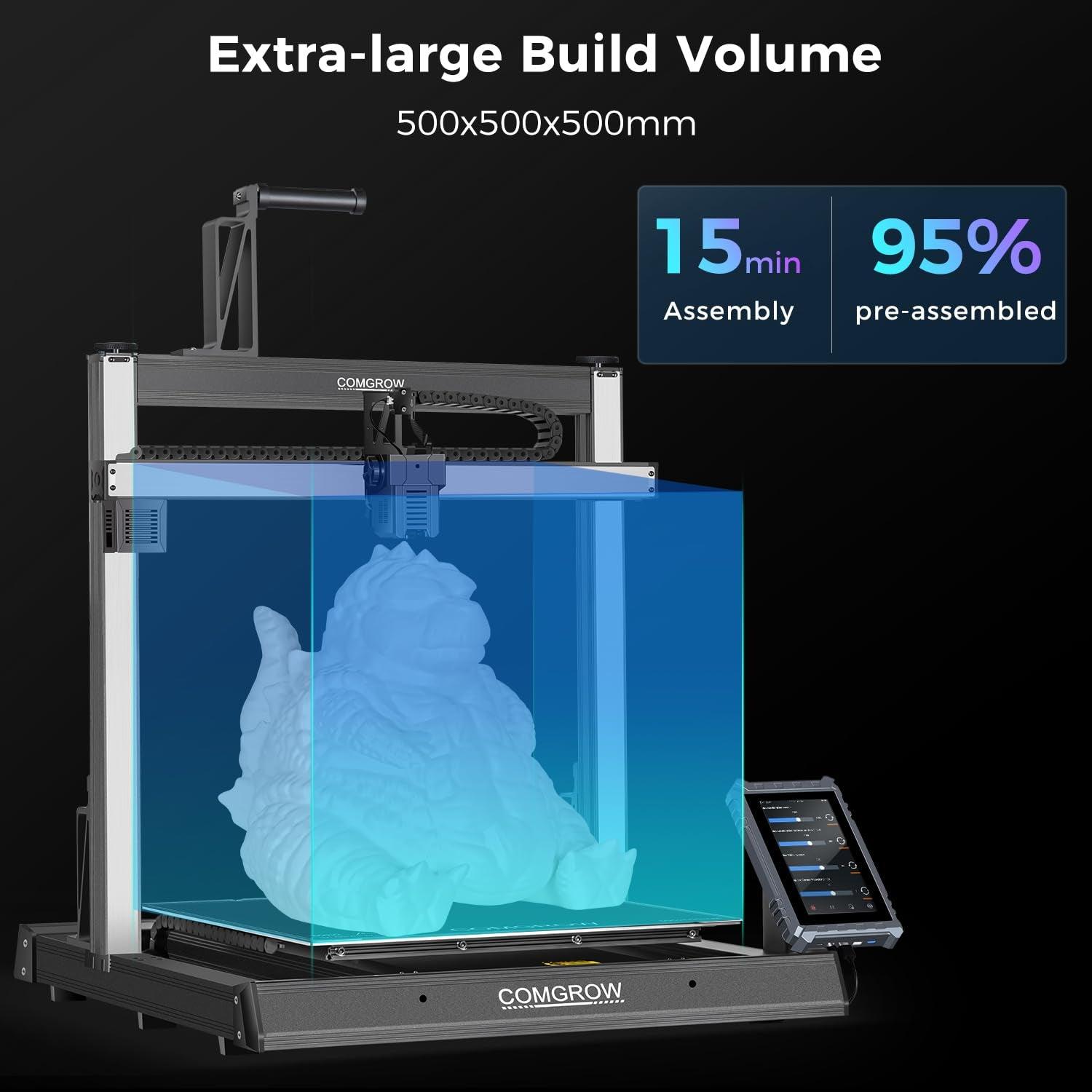
發表評論
在發布之前,所有評論都會進行調節。
此網站已受到 hCaptcha 保護,且適用 hCaptcha 隱私政策以及服務條款。